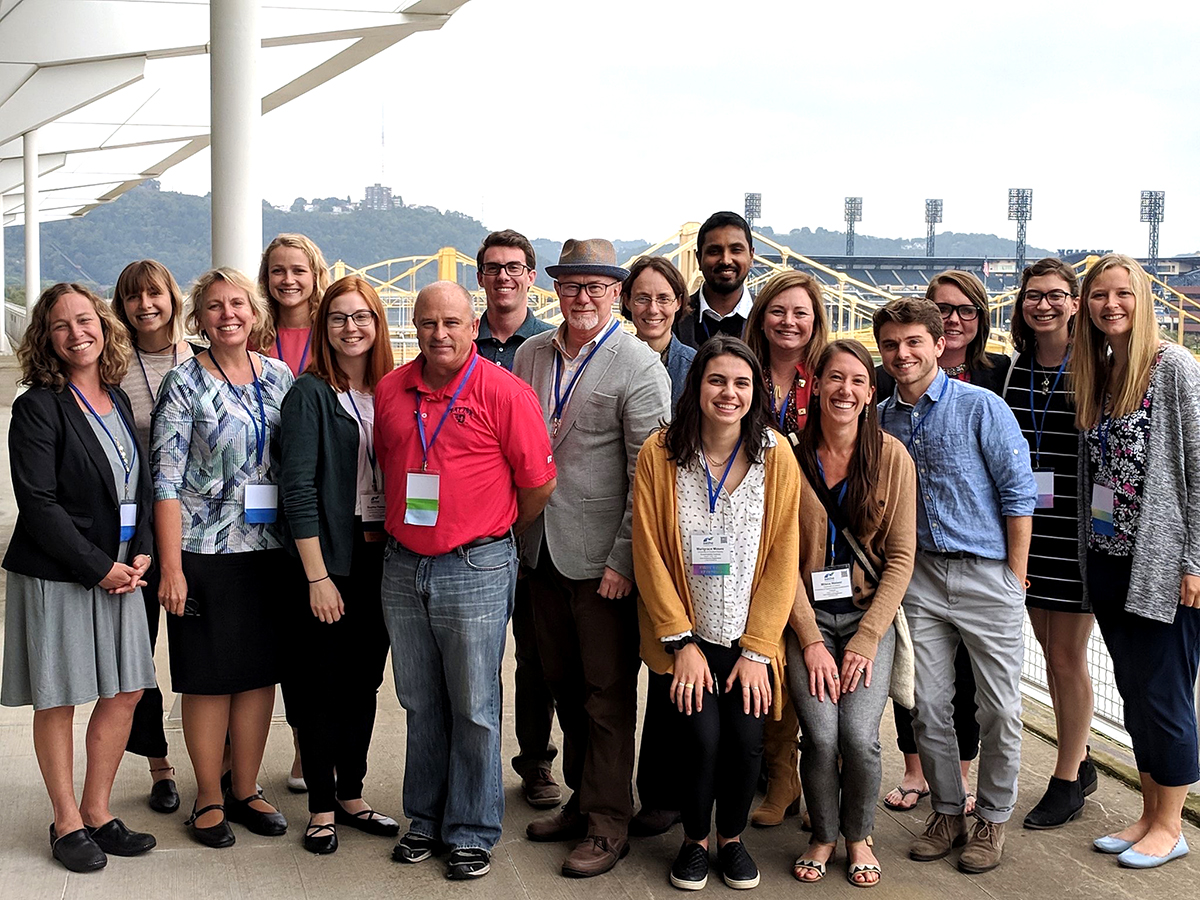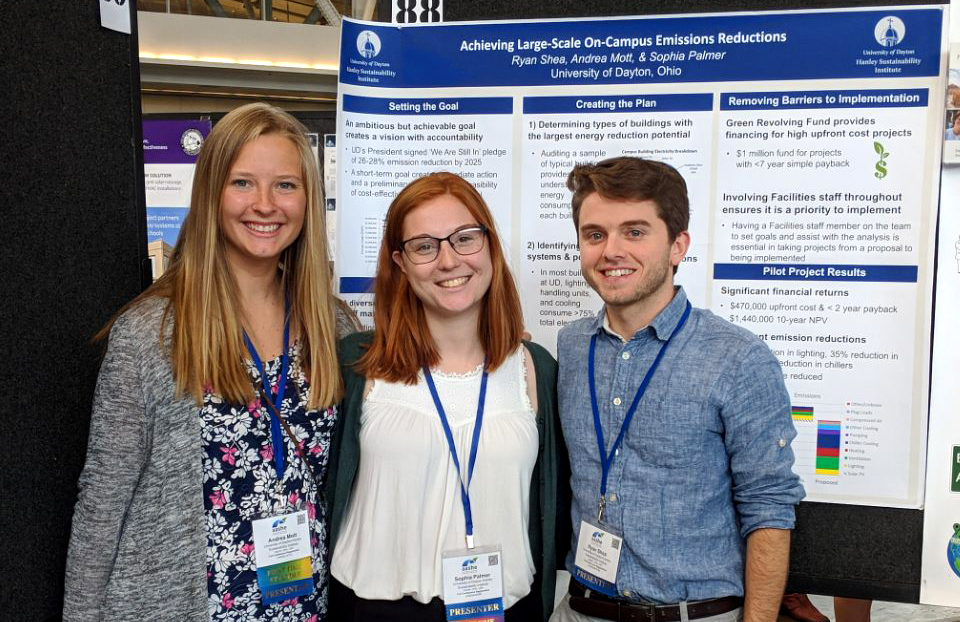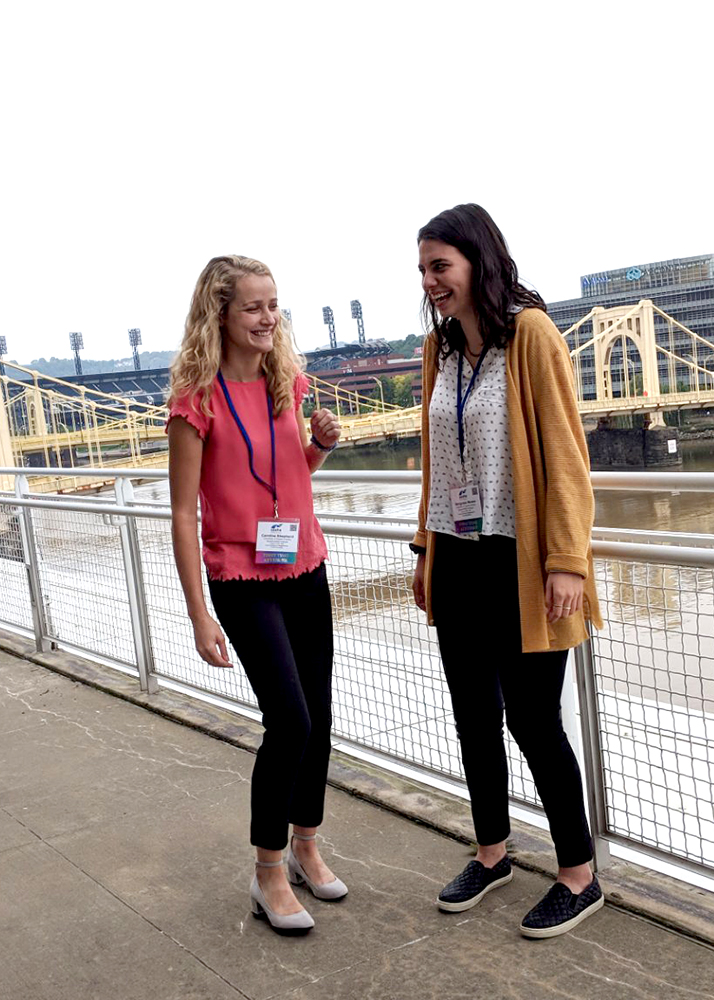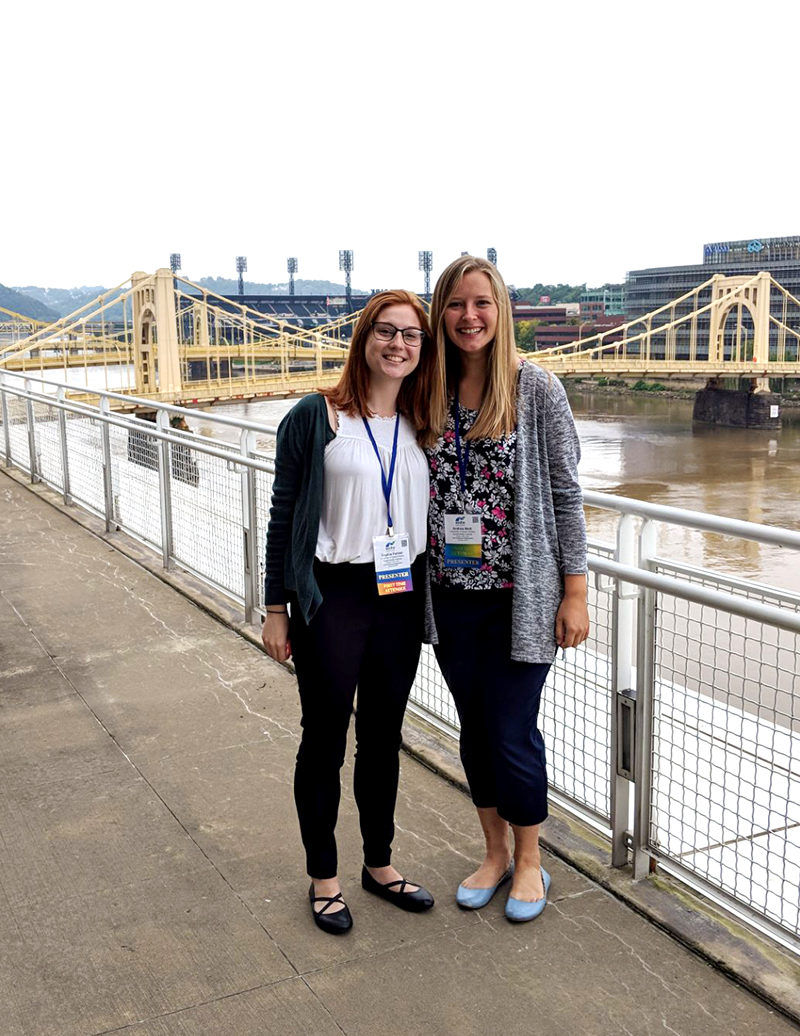Hanley Sustainability Institute
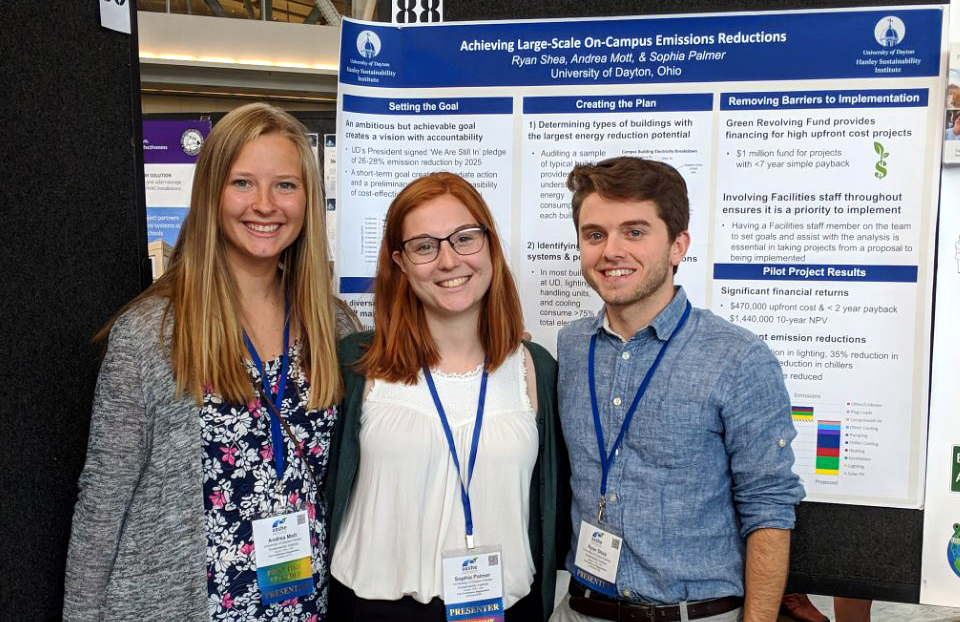
Lessons and Connections from AASHE 2018
By Sophia Palmer
As UD students, we often joke that we are living in our own campus “bubble,” where we tend to focus more on the events and news happening on campus than the things happening locally or even nationally. When it came to the way I viewed campus sustainability, I found that I had the “bubble” approach—I was very familiar of the University of Dayton’s efforts to reduce our waste and lower our energy consumption, but I knew nothing about how other colleges were reaching these same goals. Luckily, I had the opportunity to change my viewpoint.
Over fall break, The Association for the Advancement of Sustainability in Higher Education, (AASHE, for short), hosted its 2018 conference in Pittsburgh, Pennsylvania. The theme of the four-day conference was the UN Sustainable Development Goals, so naturally the time was filled with many keynote speakers, workshops, and presentations relating to this topic. As an undergraduate student in this setting, it was very exciting to learn about different innovations and techniques used on college campuses across the country. Everyone was so passionate about their topics, and it was reassuring to hear how honest everyone was about their projects. After each session, the other UD student leaders and I were bursting with new ideas to take back to campus with us, and the laundry list of things we want to accomplish on campus started to grow.
At AASHE, I realized that I am in a unique position at the University of Dayton compared to students attending other colleges. Over my time there, I heard many professional sustainability coordinators and energy managers speak about their schools’ projects. While some mentioned student involvement in signing petitions to bring renewable energy to campus and gaining support for future projects, few mentioned students helping with the calculations required as a precursor to this work. As a student leader at Hanley Sustainability Institute (HSI), I am a part of a team of undergraduate and graduate students who work closely with the people in facilities management to analyze how we can become more energy efficient as a campus. My calculations are vital in determining energy savings and compiling a campus carbon-neutrality plan. During the conference, my team members, Andrea Mott and Ryan Shea, and I had the chance to present these findings during a poster session. Many people were surprised that we, as students, could be at the forefront of our campus sustainability efforts. This opportunity allowed me to see how valuable an experiential learning opportunity, like the energy team, can be.
In addition to professional development and a new bought of project inspiration, I left the conference with key takeaways that have changed my viewpoint on how to approach campus sustainability. First, as a university, we do not talk about the Sustainable Development Goals (SDGs) as much as we should. Over the two and a half years I have attended UD, I have had one lecture about the topic in a SEE class, and heard the term tossed around several more times, but as someone who is minoring in sustainability and works for HSI, I think my viewpoint is a bit biased. However, as an institution that prioritizes sustainability and is educating future world leaders, the SDGs should be at the forefront of everything we do. While some may argue that following the principle of the common good might be enough, these two concepts go hand in hand. Perhaps if we took time to consider what SDGs our on-campus projects were incorporating or how what we are learning in classes relates to these goals, we would have a better understanding of how our campus plays a role in the overall goal of global sustainability.
Other than attending the conference itself, one of my favorite parts was getting to spend time with my peers and colleagues from the University of Dayton. I was able to have great conversations with people from the Human Rights Center, Purchasing, Facilities, and River Stewards. After returning home, it would be easy to go back to our silos, but that should not be the case. Now, especially in with the release of the new UN report that states we must reduce carbon emissions by 45% by 2030, we cannot let these collaborations die. In fact, especially as student leaders, we need to continue to expand our network among student organizations. There are many groups on campus that want to accomplish things such as waste-reduction or energy efficiency, but those goals will never be achievable if we work as individual units. If we come together as a university, such a daunting task will become far more attainable. I am excited to bring what I have learned back to campus with me, and I am interested to see what the future of sustainability at UD holds.
Sophia Palmer is a junior, Mechanical Engineering major and SEE minor. Sophia is an HSI sustainability leader, working on the HSI campus energy team.

